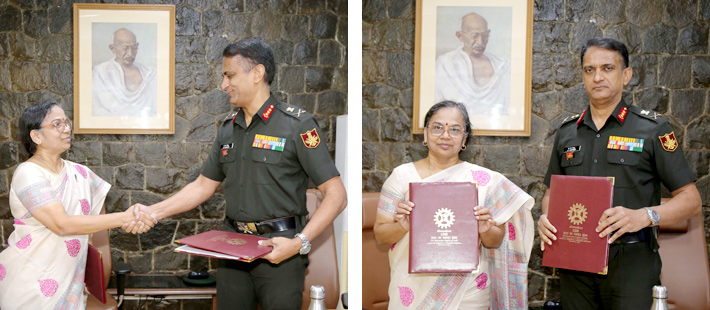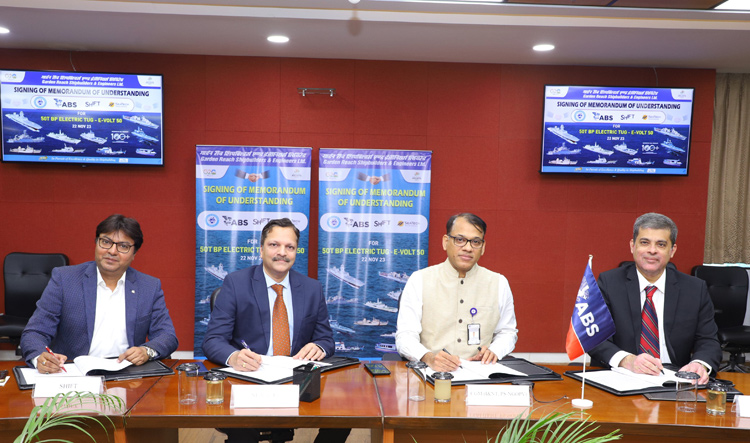INDIAN ARMED FORCES CHIEFS ON OUR RELENTLESS AND FOCUSED PUBLISHING EFFORTS

The insightful articles, inspiring narrations and analytical perspectives presented by the Editorial Team, establish an alluring connect with the reader. My compliments and best wishes to SP Guide Publications.

"Over the past 60 years, the growth of SP Guide Publications has mirrored the rising stature of Indian Navy. Its well-researched and informative magazines on Defence and Aerospace sector have served to shape an educated opinion of our military personnel, policy makers and the public alike. I wish SP's Publication team continued success, fair winds and following seas in all future endeavour!"

Since, its inception in 1964, SP Guide Publications has consistently demonstrated commitment to high-quality journalism in the aerospace and defence sectors, earning a well-deserved reputation as Asia's largest media house in this domain. I wish SP Guide Publications continued success in its pursuit of excellence.
Boosting Innovations
Innovations under Make in India are bridging defence and technology
 |
The Author is Former Director General of Information Systems and A Special Forces Veteran, Indian Army |

A Memorandum of Understanding (MoU) for technical collaboration and joint research was signed between Headquarters of the Integrated Defence Staff (IDS) and the Council of Scientific and Industrial Research (CSIR) on November 23, 2023 to boost research and development in the field of defence technology. The Ministry of Defence (MoD) issued a statement that said, "The agreement between the IDS headquarters and CSIR aims to provide an umbrella framework to initiate collaborative interaction between CSIR Labs, IDS headquarters and Armed Forces – namely Indian Army, Indian Navy and Indian Air Force – to enhance scientific understanding of technologies related to defence and undertake joint research and development in dual-use technologies."
A MoU for technical collaboration and joint research was signed between Headquarters of the Integrated Defence Staff and the Council of Scientific and Industrial Research on November 23, 2023
The IDS is the single-point organisation for collaboration in the MoD, which integrates policy, doctrine, war-fighting and procurement. The CSIR undertakes Research & Development (R&D) in diverse areas involving science and technology. The CSIR expertise ranges from oceanography, geophysics, chemicals, drugs, genomics, biotechnology and nanotechnology to mining, aeronautics, instrumentation, environmental engineering and information technology. It has a network of 37 national laboratories, 39 outreach centres, one innovation complex and three units, with a pan-India presence. The CSIR's R&D wing comprises about 3,521 scientists, supported by about 4,162 technical and support personnel.
The Indian Navy has developed an anti-swarm drone 30mm ammunition that is capable of building an iron wall around its own warships to protect it from any attack by enemy swarm drones
The Indian Navy has developed an anti-swarm drone 30mm ammunition that is capable of building an iron wall around its own warships or assets to protect it from any attack by enemy swarm drones including hundreds of drones. The 30mm ammunition is used by the AK-630 close-in weapon system. The ammunition has been developed in partnership with a defence research lab in Pune and was displayed at the Indian Navy's Swavalambam 2023 exhibition at Bharat Mandapam recently.

Media reports of December 21, said that the Indian Army has unveiled an in-house innovative Multipurpose Octocopter designed to enhance the operational capabilities in the challenging high-altitude environments. This octocopter can be used for surveillance and reconnaissance, fire support/attack and delivery of essential supplies. Equipped with high resolution cameras, the drone can conduct surveillance missions to provide real-time video feeds to the operators for live situational awareness to assist decision making. The Octocopter features a platform for mounting assault rifles and grenades. With a payload capacity of 25 kgs in high altitude areas, it can transport essential supplies to forward posts effectively.
The Indian Army has unveiled an in-house innovative Multipurpose Octocopter designed to enhance the operational capabilities in challenging high-altitude environments
Concurrently, news reports of November 24 have stated that the Defence Research and Development Organisation (DRDO) is advancing the development of an Air-Launched Cruise Missile (ALCM) based variant that can be launched from fighter jet aircrafts. The maiden trial of the submarine launched cruise missile (SLCM) with a range of 402 km was successfully conducted earlier this year. The DRDO reportedly has already developed two more variants - Land Attack Cruise Missile (LACM) and Anti-Ship Cruise Missile (ASCM), which are based on the SLCM.
The ALCM will feature slightly different airframes that are optimised for air launch. The ALCM is envisaged to fly at speeds of Mach 0.7; a range of 500 km and equipped with a terminal seeker that will allow it to home on to the target with high accuracy. This will be a significant force multiplier for the IAF by providing long range precision strike capability.

In July 2023, the French company Safran Helicopter Engines announced that they are setting up a joint venture company with Hindustan Aeronautics Limited (HAL) in Bengaluru, which will be dedicated to the "design, development, production, sales and support of helicopter engines" with the focus first on the Indian Multi Role Helicopter (IMRH). In March 2020, the Cabinet Committee on Security (CCS) approved procurement of 15 Limited Series Production (LSP) variants of LCH at a cost of 3,887 crore, along with infrastructure sanctions worth 377 crore, 10 for the IAF and five for the Army.
French company Safran Helicopter Engines announced that they are setting up a joint venture company with Hindustan Aeronautics Limited, dedicated to the 'design, development, production, sales and support of helicopter engines'
The twin-engine LCH designed and developed by HAL is a 5-8 tonne class dedicated combat helicopter, conceptualised after the 1999 Kargil conflict when the need for a dedicated platform capable of operating in high altitudes was felt. The LCH has a combat radius of 500 km and can go up to a service ceiling of 21,000 feet. It is armed with a 20mm nose gun, 70mm rockets, anti-tank guided missile 'Dhruvastra' and air-to-air missile 'Mistral-2' of the MBDA which has a maximum interception range of 6.5 km.

On the seafront, the Garden Reach Shipbuilders and Engineers (GRSE) Ltd has signed a memorandum of understanding (MoU) with Shift Clean Energy (Shift), Seatech Solutions International (Seatech), and the American Bureau of Shipping (ABS) to develop electric tugs named 'E-VOLT 50'. The project seeks to mitigate carbon emissions, enhance operational efficiency, and establish new benchmarks for performance and environmental sustainability within the tugboat industry in a step towards India's aspiration to become the 'global hub for green shipbuilding' by 2030.
GRSE will construct the tugboat based on the design by Seatech, while Shift will provide energy storage solutions. ABS will oversee the construction and design process, ensuring adherence to all applicable regulatory standards, thereby certifying safety, reliability, and compliance. Currently, GRSE is constructing a zero-emission electric ferry, with the capacity to accommodate 150 passengers, for the West Bengal government.





